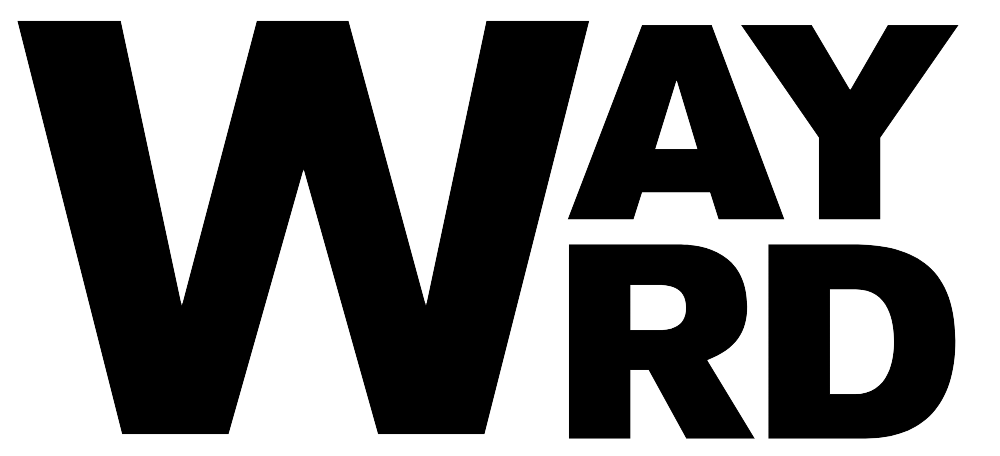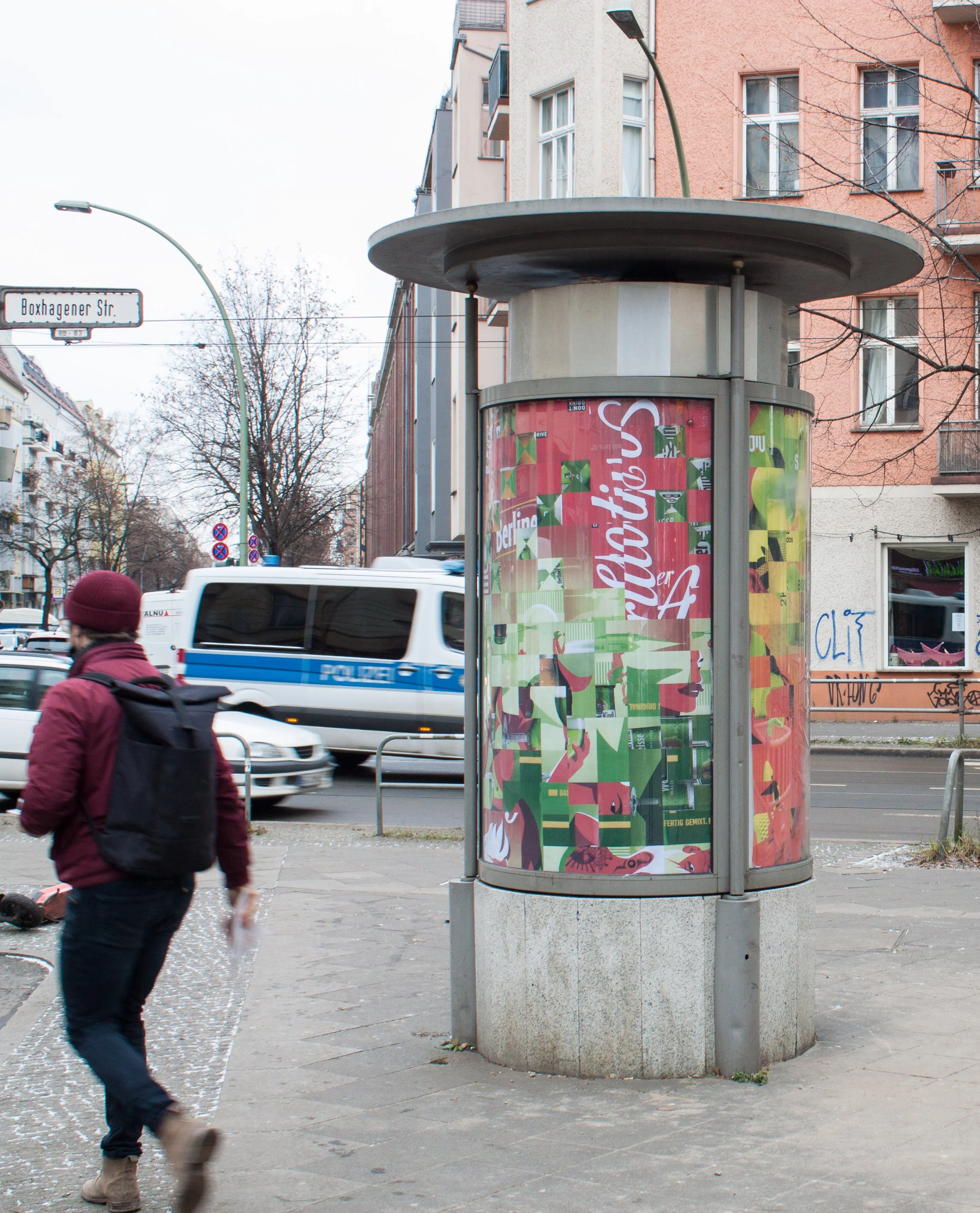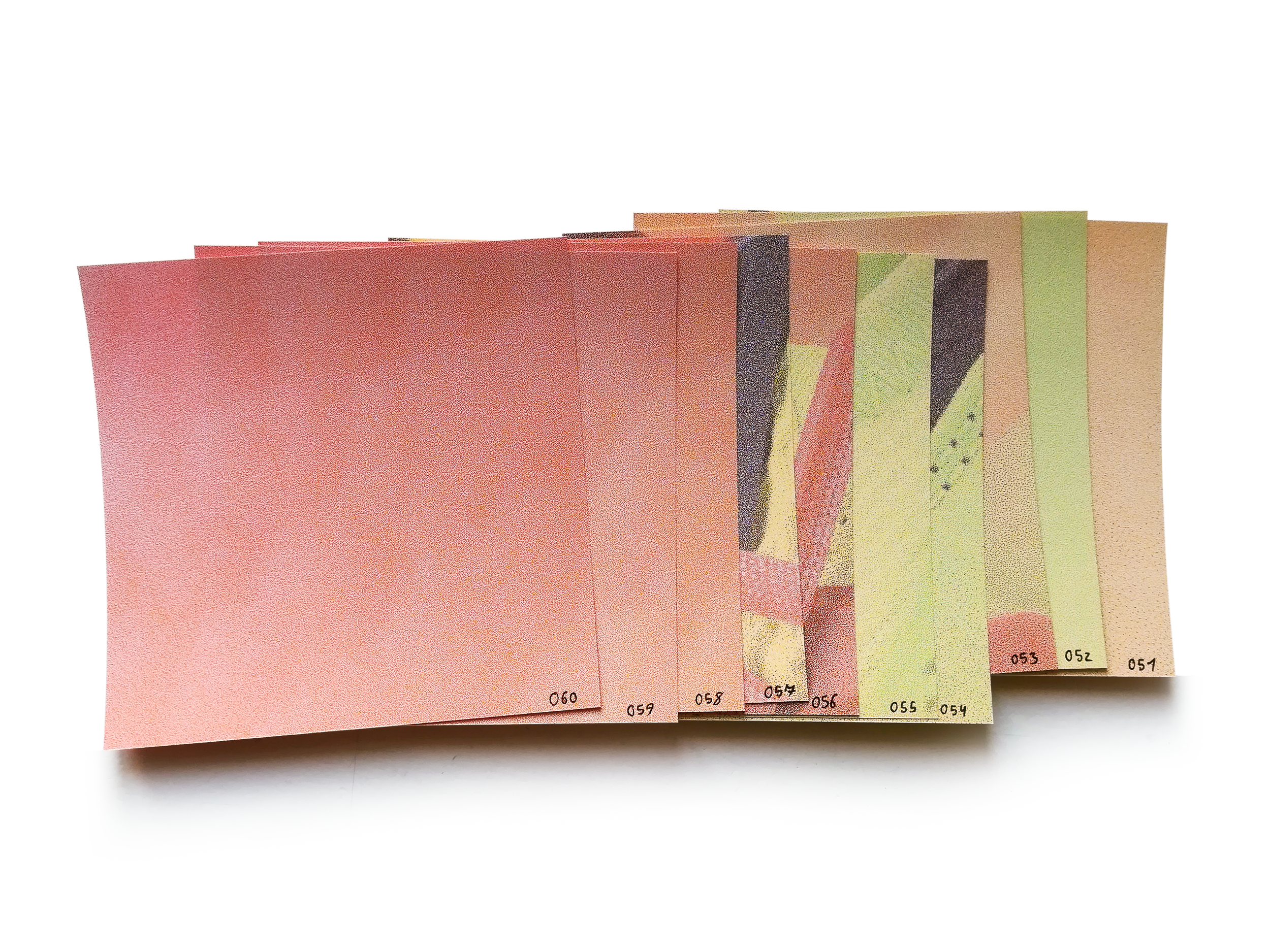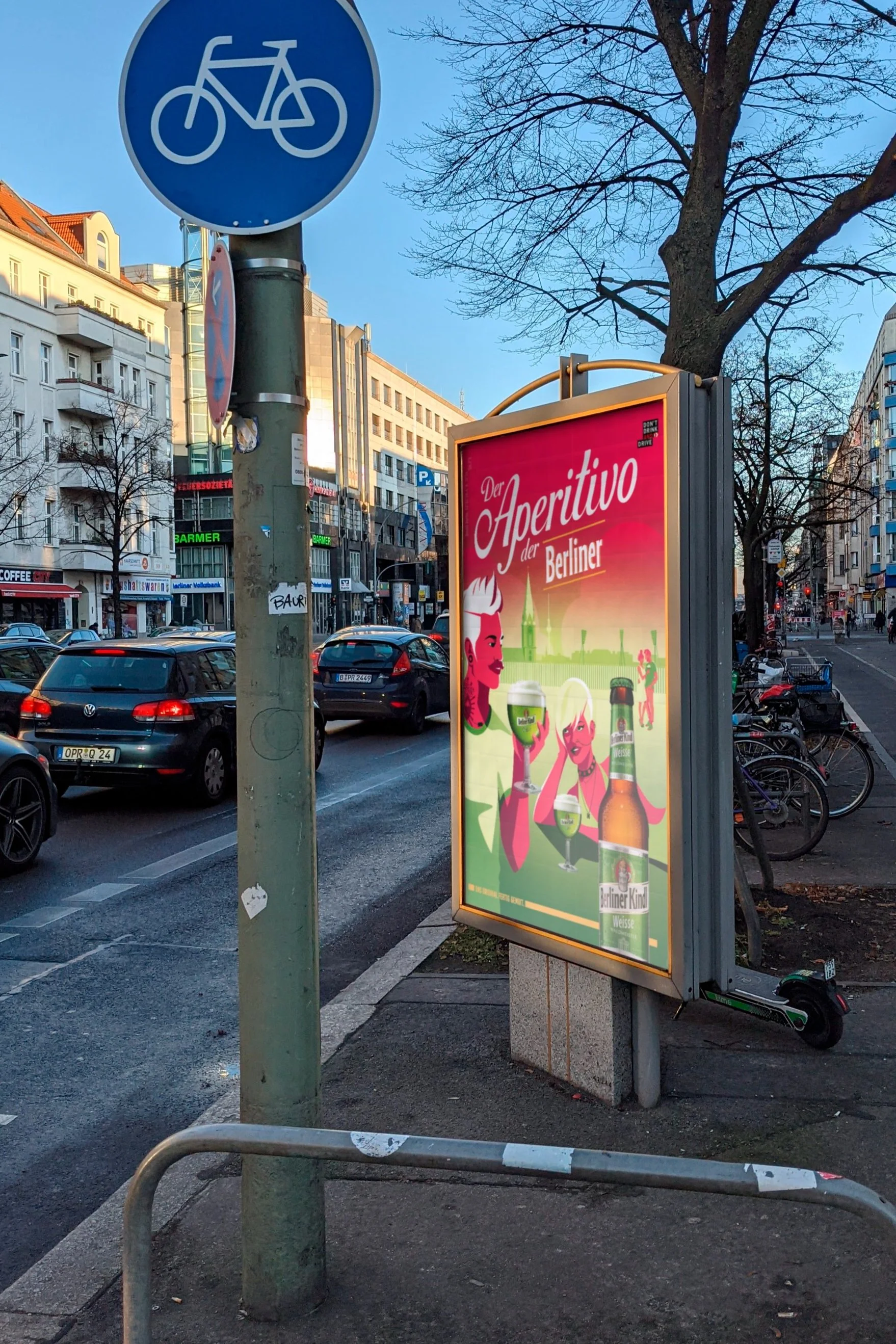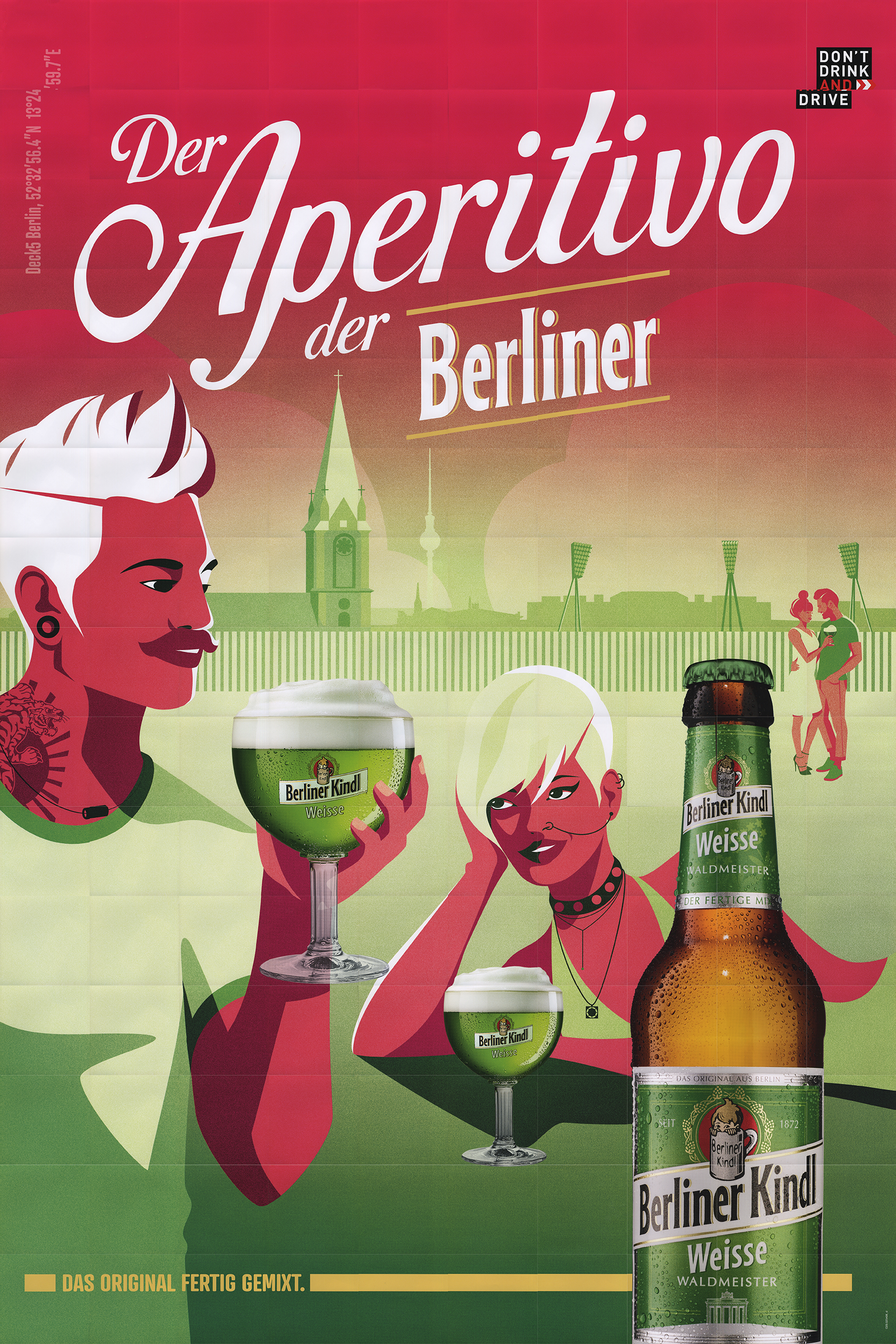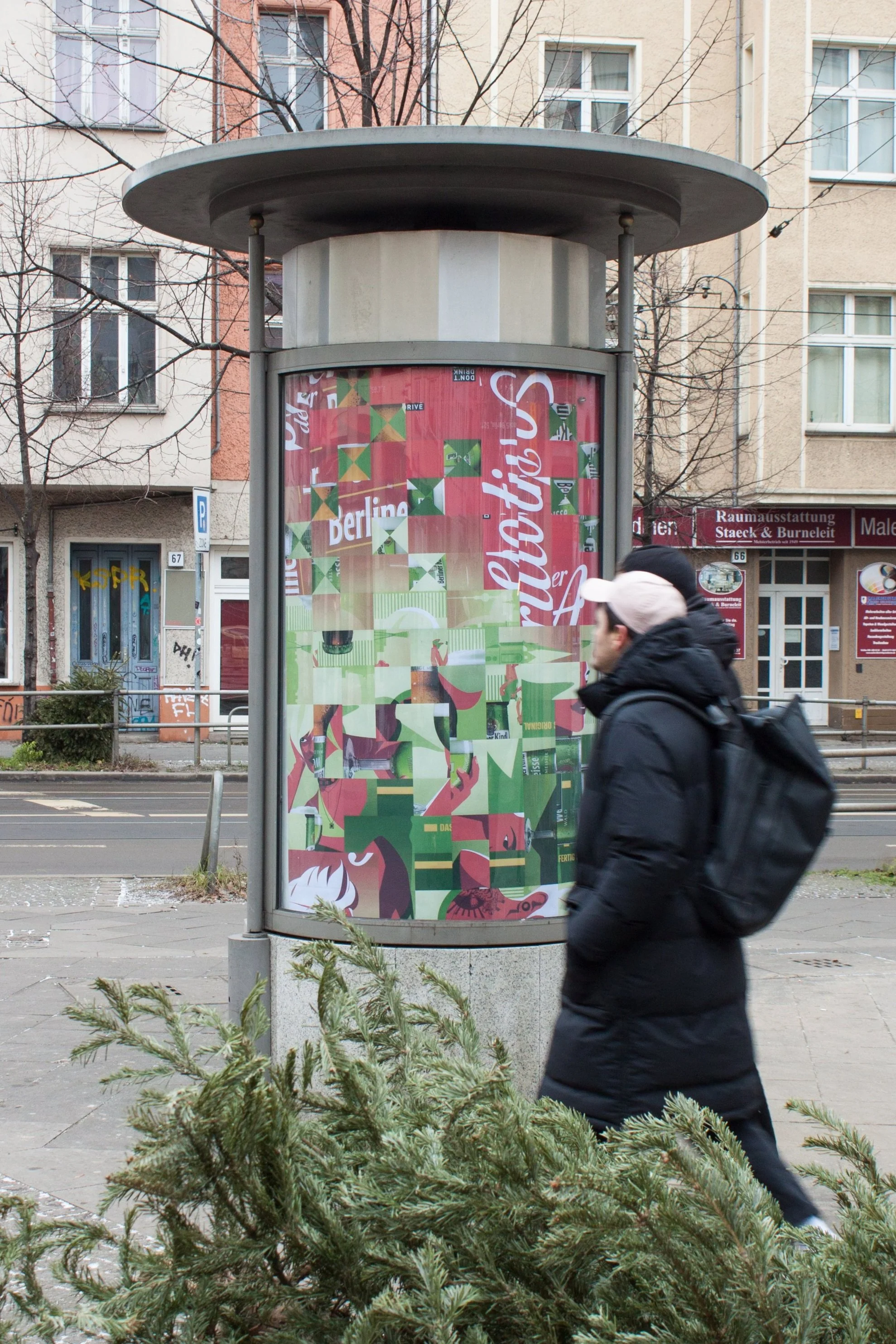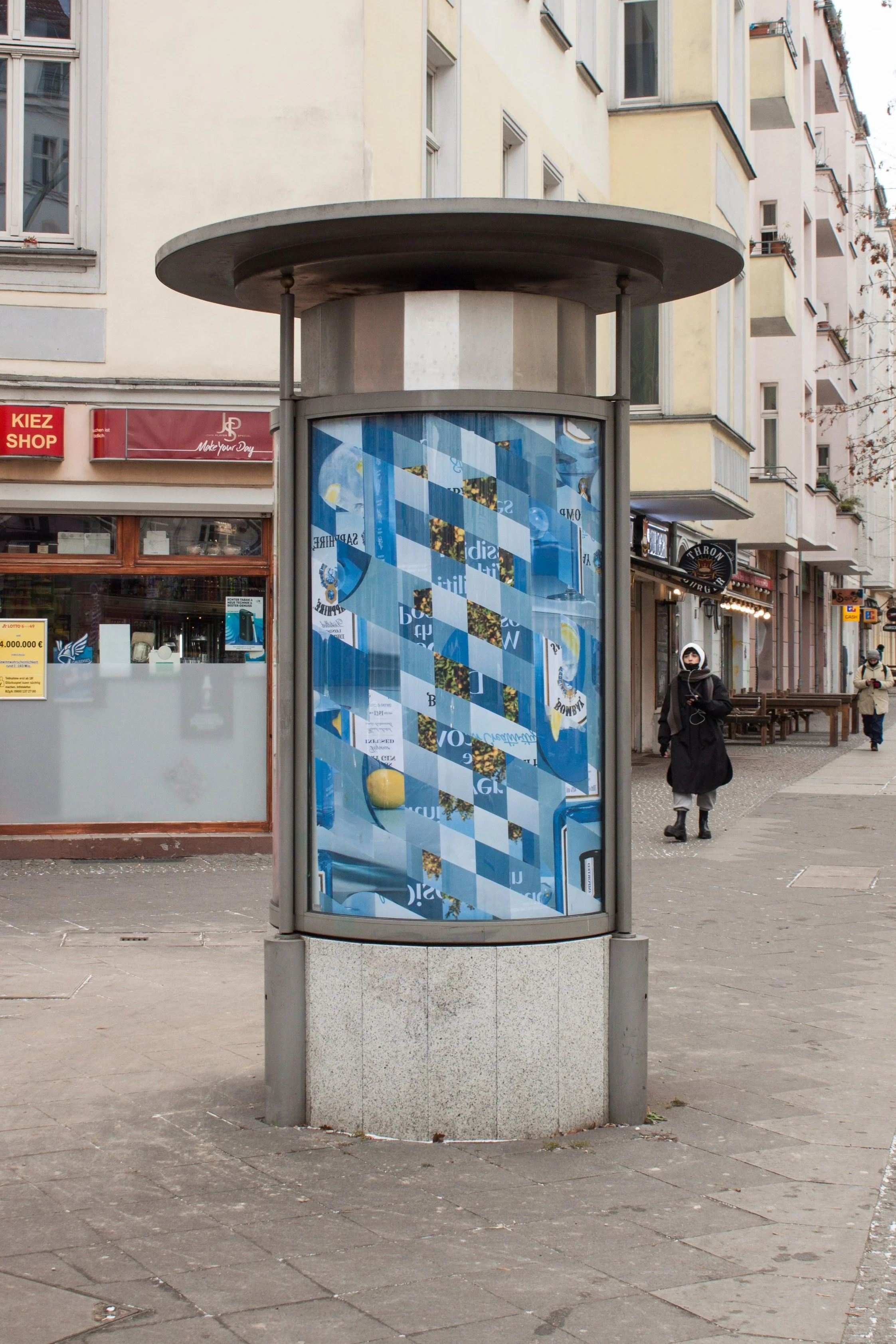Bachelor Project
Art in Ad Spaces
-
Date: 2021
Deliverables: 3 Artworks (119 x 175 cm) and one public art installation
Location: Friedrichshain-Kreuzberg, Berlin
Installation: 1 week
Description: This project removed three advertising posters from outdoor advertising spaces and through a process of collage and détournement, created new works of art which were then re-installed in a public advertising space.
-
In today’s cities, advertising spaces are controlled primarily by media companies who are not accountable to the inhabitants of the cities in which they operate. They have succeeded in carving out pieces of public space, using them to generate capital while operating under the facade that these spaces do not belong to the residents of the city. Faced with a visual landscape dominated by advertisements which they are unable to influence, city inhabitants have learned to subconsciously ignore ad spaces, accepting them as an inevitable part of daily life.
-
The goal of this project is not to criticise mass consumer capitalism, but rather to highlight how public space has been privatised for advertising, and inspire critical thought about the role of such spaces in our cities. In reappropriating advertising spaces for the display of artworks, this project hopes to communicate that advertising spaces rightfully belong to urban inhabitants, and should be used for purposes which serve their interests. By doing so, I believe cities can begin to develop urban spaces which better meet the needs of city inhabitants, rather than the goals of media corporations.

Motivation
When I moved to Berlin, I quickly became aware of advertising’s overwhelming presence in the urban visual landscape. Unlike other advertising media, it is impossible to opt out of outdoor advertising on the street – it always exists somewhere in our field of vision. When was it that we, as urban inhabitants, consented to a constant barrage of consumer capitalist messages that we encounter on the street?
-
Tampering with outdoor advertising spaces is an act of civil disobedience that is considered illegal in most cities, with the most common charges being “vandalism” or “wilful damage to property”.
In order to avoid being fined for their work, art activists will often use high visibility workwear to impersonate city employees and avoid detection by law enforcement.
A neon orange jacket with reflective stripes needs only a logo stencilled on the back to engineer a perfectly convincing uniform.
-
Urban advertising spaces are designed with precautions intending to make them inaccessible to the public. The steel and glass cases that house advertisements can only be unlocked with special keys which belong to the employees of advertising corporations.
However, the actual locking mechanisms securing such spaces are remarkable simple. The “keys“ to open them are simply specialised wrenches, and reverse-engineering them is cheap and easy.
Process:
Analog Glitch
Once an advertisement had been obtained, the process of détournement which transformed it into an artwork was overwhelmingly analog. Each poster measures 119 x 175 cm, which allows it to be divided into a grid of exactly 150 squares with side lengths of 11,6 cm. With a straight-edge and a sharp blade, each poster was cut into equal sized pieces with the utmost precision. They were then numbered based on location in the original advertisement, scanned at 300 DPI, and replicated in a digital file.
A surface slightly larger than the final format was covered with canvas, and metal tacks were installed based on a grid system. This allowed individual pieces of the advertisement to be temporarily hung with magnets in order to arrange/rearrange the composition at will. In many circumstances I found myself nearly completing an artwork, just to realise that the composition would not work with the remaining unplaced pieces, and having to start again.
I wanted to demonstrate that the identical forms, colours, and textures which advertisers had used to promote consumer capitalism could be appropriated in a way which instead inspires artistic interpretation. Therefore, no elements were added to the composition which did not exist in the original advertisement, nor were any elements removed from the piece. Instead, the advertisement is simply fragmented and its pieces rearranged.
Artworks Before & After
